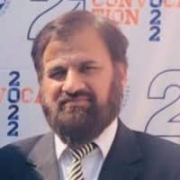What is our primary use case?
It has been used across various verticals, including billing, sales, business, and pharmaceuticals. It has been implemented in different business verticals.
How has it helped my organization?
Apart from the core business processes, the performance has been drastically improved. The speed of executing reports has increased significantly. We no longer need day-minus-one business processing.
In the past, we had to extract, transform, and load data (ETL cycle), and only then would we get critical dashboards and reports the next day. Now, it's available in real-time data, within the same instance, on a single click. This is a major improvement.
Everything is available in S/4HANA. It's really good. There might be some restrictions in the public cloud, but in the private cloud, anything you can think of can be made available. That is the best part of S/4HANA.
What is most valuable?
S/4HANA stands for high-performance analytic appliance. 90% of activity is done on the hardware side, as it supports fast memory executions.
Initially, it was SAP ECC 6.0, but then they introduced faster execution processes and best practices for different verticals. It gives an advantage on top of what is being used across different businesses. They have introduced best processes altogether.
The implementation time has also been reduced drastically. We start by showing the customer the best practices and configurations. This is a major difference from before when we used to understand their "as-is" process and then design the "to-be" process.
Now, we get acceptance on the best practices early on and only do customizations where necessary. Most customers prefer this approach because they are changing their business to match best practices rather than us changing the software to match their business.
Additionally, there are public and private editions of the product. The private cloud is owned by the customer, giving them full control over customizations. The public cloud is controlled by SAP, which offers only best practices that customers accept, knowing they align with industry standards.
What needs improvement?
One disadvantage is the introduction of multiple products. In older versions, everything was in a single package. Now, we need separate licenses for different functionalities: S/4HANA Cloud for human capital management, SuccessFactors for talent management, and Ariba for procurement. For advanced components, we need S/4HANA for enterprise portfolio and project management.
Additionally, if we purchase SuccessFactors, we also need to add integration tools like SAP Cloud Platform Integration. So, it's like buying a basic bundle (starting from 65 or 25 FPUs) and then adding more components and integrations later, each with its own license fees. Essentially, they have changed the model to introduce multiple products with new license fees.
Everything is available and works well in S/4HANA. There might be some restrictions in the public cloud, but in the private cloud, you can make anything available.
For how long have I used the solution?
I am a consultant; we don't use it in-house. We work with SAP. It has been almost nine to ten years since we started with S/4HANA side.
What do I think about the stability of the solution?
The private cloud is 100% stable. The public cloud still needs some time; it's 90% stable, but 10% still needs enhancement.
Private cloud is ten out of ten, and public cloud is nine out of ten.
What do I think about the scalability of the solution?
It is a very scalable solution.
How are customer service and support?
The customer service and support are good.
How would you rate customer service and support?
How was the initial setup?
S/4HANA deployment is easier than previous versions.
Deployment time:
The deployment time depends on the complexity of the business.
For a public cloud implementation with standard business processes, it takes three to four months, with the fifth month for support.
For a private cloud implementation, it may take five months or more, depending on the customizations and configurations needed. The number of consultants and the complexity of the business processes are the most important factors.
Moreover, the maintenance is easier now.
Integration into existing infrastructure:
There are multiple options for integration depending on the products. For SuccessFactors, you can either use SAP Cloud Platform Integration (CPI) or the SuccessFactors Integration Suite.
In the Middle East, where I work, there's a government-mandated e-invoicing system that requires integration with S/4HANA.
Like Ariba, that also needs to be integrated. In this version, integration options have been expanded. Previously, it was only SAP Process Orchestration (PO) that handled integration, but now there are more options available.
What about the implementation team?
For a private cloud implementation, a team of eight or nine people: six consultants for the core modules, one basis consultant, one technical consultant, and one project manager.
For a public cloud implementation, the number of consultants is reduced to six.
What was our ROI?
ROI has multiple aspects. In the initial days with ECC, costly hardware with depreciation cycles was necessary. Moving to the cloud reduces those expenses. Within three to five years, ROI is very good.
Additionally, the need for data centers, DR sites, and skilled maintenance teams is eliminated, drastically reducing costs within five years compared to SAP ECC.
What's my experience with pricing, setup cost, and licensing?
It's expensive when opting for a private cloud but cheaper on a public cloud.
For private clouds, the price could have room for improvement. It is a bit on the higher end.
The license is subscription-based. The users can lock in licenses for three, five, or even seven years. The agreed-upon pricing on day one applies yearly for the chosen duration. This is available for all SAP products.
Clients don't have to pay extra for support, maintenance, or other things. So, the subscription includes everything.
What other advice do I have?
For S/4HANA, my recommendation is that finance is very strong. They have improved. SD (Sales and Distribution) in finance has been strong since day one, but now they have also improved the purchase cycle significantly. They have introduced multiple products like IBP (Integrated Business Planning), which has improved their planning for production and the entire manufacturing process.
Considering this, I would recommend S/4HANA Private Cloud as of now. SAP is working very hard on S/4HANA Public Cloud as well, so in one or two years, the public cloud might be the best option.
Overall, I would rate the product a nine out of ten.
Disclosure: My company has a business relationship with this vendor other than being a customer. Partner
















